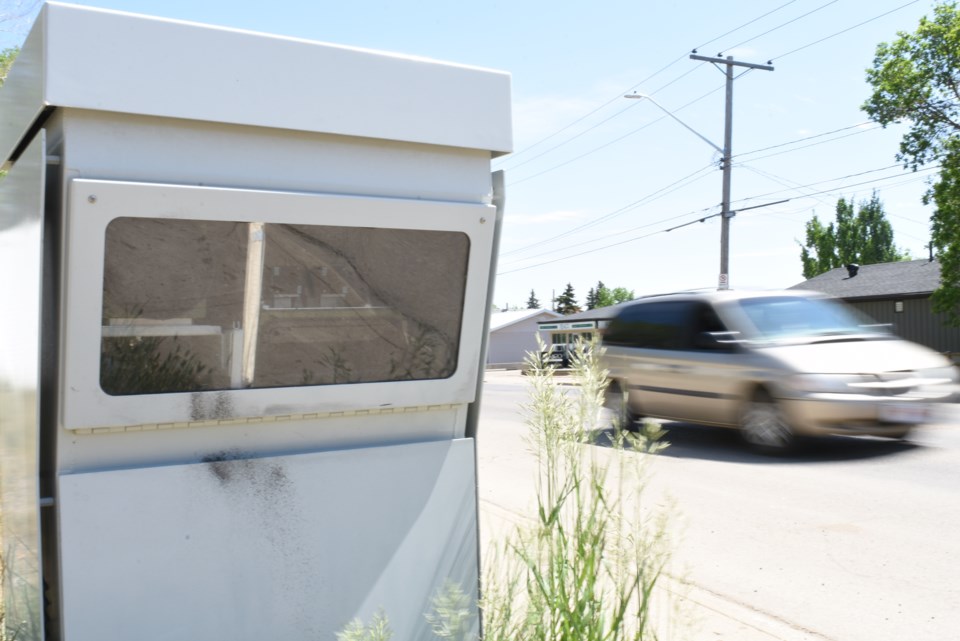MOOSE JAW — The automated speed enforcement (ASE) cameras in Moose Jaw have generated over $4 million in revenue during the last five years, while that system will continue nabbing lead-footed motorists for another half-decade.
The provincial government installed two cameras in Moose Jaw in 2015, with one on Highway 1 and a second alternating between two school zones, and installed another on the highway in 2017.
When that pilot program concluded, Saskatchewan Government Insurance (SGI) signed an agreement with the City of Moose Jaw in 2019 for the ASE system, with three amendments made since then.
With the current agreement having expired in March, city administration presented a new agreement during the May 13 regular council meeting, with council unanimously agreeing to renew the contract for another five years to 2029.
The program has generated $4,280,000 in revenue over the last five years, with the Moose Jaw Police Service (MJPS) receiving $1,080,000 for its traffic safety programs and the City of Moose Jaw receiving $3.2 million for its roadway renewal programs, a council report said.
Furthermore, the program generates $600,000 to $800,000 annually for the city’s traffic safety reserve.
City manager Maryse Carmichael told council that she and Police Chief Rick Bourassa met with SGI a few months ago to discuss the agreement. Moreover, both have been pleased with what the program has done, including its positive financial effect and its ability to force motorists to slow down around the city.
She added that city administration doesn’t want to see anything different in the agreement because it has been working well.
Coun. Crystal Froese asked how the municipality could acquire another ASE camera, saying she wanted to see one on Highway 2 south leading into the city because that road turns into a one-way and goes through a school zone.
“(That zone does) have a speed monitor saying how fast vehicles are going, but I’m sure people are going much faster than they should be,” she said.
The police have said reducing speeds also reduces collisions, which has been most noticeable at the intersection of Highway 1 and Ninth Avenue Northwest, Froese added.
Adding an extra camera is something that was discussed during the meeting with SGI, Carmichael said. Meanwhile, the MJPS has a portable system it can deploy at locations to gather statistics on speeding, which the city will need when it applies to SGI for another device.
Mayor Clive Tolley said reducing the highway speeds to 80 kilometres per hour from 100 km/h has helped reduce the severity of the collisions, while there have been no deaths since then.
“So I think it’s worked. So if you choose to speed through there, you will get a ticket … ,” he added. “We are working toward other safety measures in that area, but for now, we should continue with this program that we already have.”
The next regular council meeting is Monday, May 27.




